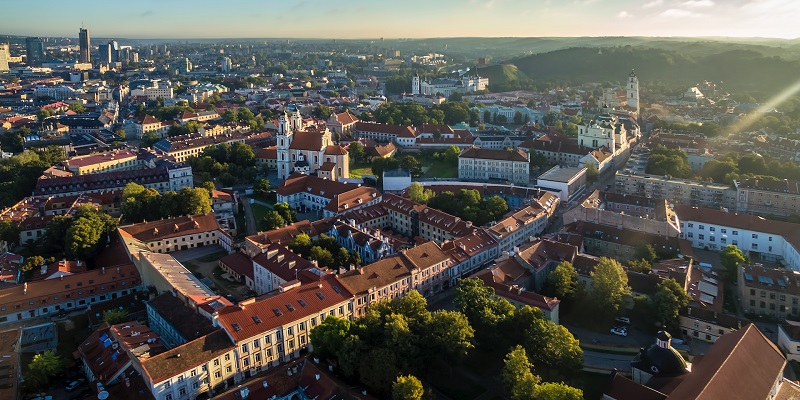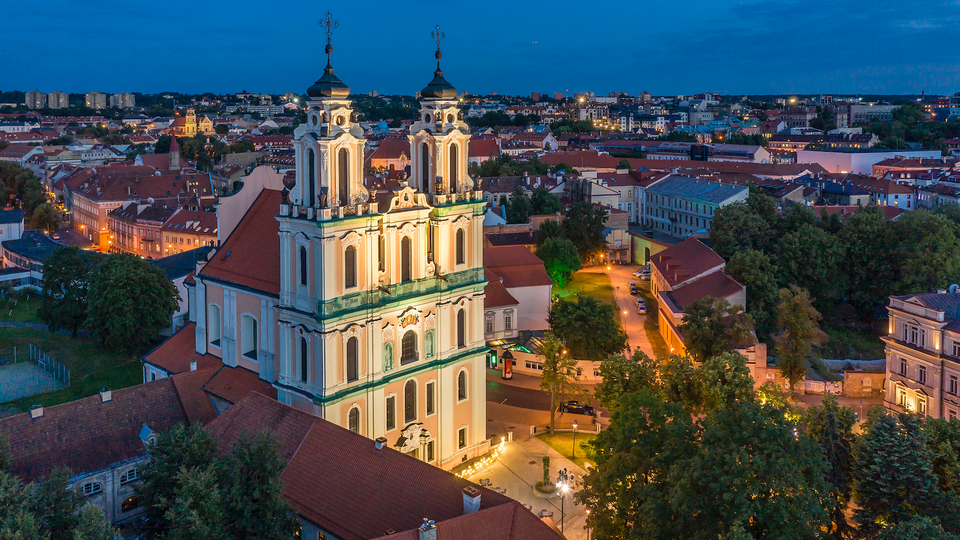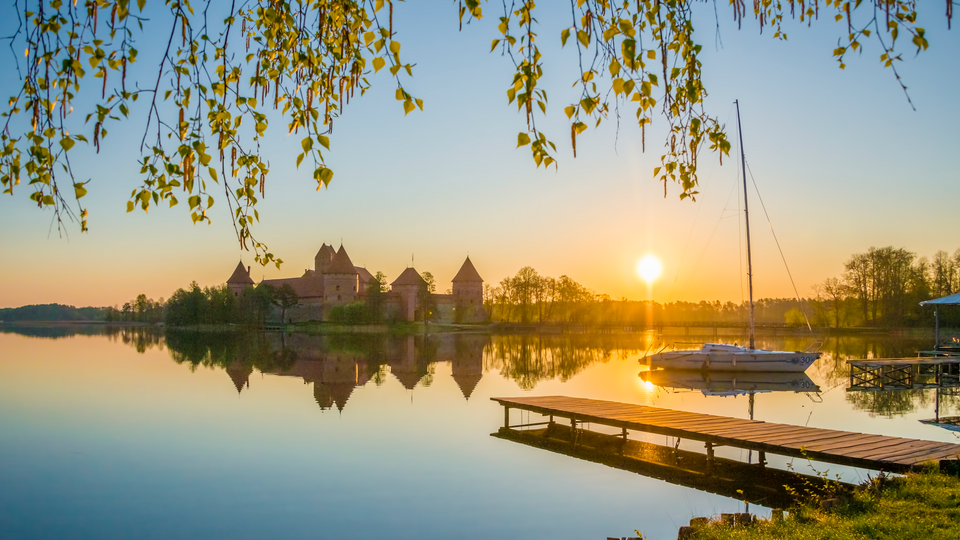



Magical and serene: a trip around the Baltic state is a well-needed mental cleanse for today’s travelers seeking escape.
Proud keepers of the Grand Duchy's 500-year legacy, Lithuania is a vibrant country that flaunts bustling cities and unspoiled lands.
Its cities have absorbed many influences over history: Vilnius — the capital — is filled with impressive Gothic and grand Baroque buildings, while Kaunas, the second-largest city, is a bulwark of interwar Modernist architecture. Any architecture-lover is due a visit.
And from wind-blown dunes to mystical, emerald-green forests, Lithuanian nature is its greatest treasure. Over 33% of the country’s surface is blanketed by woods, and in combination with 30 national parks and around 90km of a pearly shoreline, the great outdoors is always within reach.
Here we explore Lithuania’s vibrant heart through its culture, nature and food.
A historic jewel
Vilnius' Gediminas Tower stands proud overlooking the city’s surrounding parks, wooded hills and architectural delights. Down below, the Unesco listed medieval Old Town (one of Europe’s largest and most well-preserved) is a feast for the eyes.
Newly 700 years old, Vilnius was once the political centre of the Grand Duchy of Lithuania and its rich mix of architecture lives to tell the tale. Narrow medieval streets meander around a curious mix of Gothic, Renaissance, Baroque and Neoclassical buildings that are a testament to the many ethnic and political influences that have permeated the city throughout centuries.

‘There is a church wherever you turn’, as the old Lithuanian saying goes, with 28 dotted around the Old Town alone.
Near the Vilnelė River, you'll stumble upon three facing each other: St. Anne’s — which Napoleon Bonaparte sought to carry back to Paris in the palm of his hand — as well as Bernardine and St. Michael's.
Likened to Montmartre in Paris, the residents of the nearby district of Užupis breathed new life into residual Soviet Bloc architecture before declaring itself a ‘republic’ on April Fool’s in 1997. The ‘republic’ has an unusual constitution which includes the rules: ‘People have the right to live by the River Vilnelė, while the River Vilnelė has the right to flow past people’ and ‘a dog has a right to be a dog’.
The founding fathers are often seen in Užupis's parliament, otherwise just a cafe where bohemians chill out. Go get your passport stamped and enjoy a bowl of Šaltibarščiai, a bright pink and refreshingly cold beetroot soup, and Cepelinai, potato dumplings shaped like Zeppelin airships, which populate the menu.
There are many ways to explore the city.
After you've got up close and personal with Vilnius' architectural treasures, why not take to the skies in a hot-air balloon for breathtaking views of the red-roofed city and surrounding greenery?
And, if you're feeling adventurous, meander down the Neris River in a kayak for a more frogs-eye view of Vilnius, passing beautiful cathedrals and Lithuanian forests.
Down in the valley
The Neris River snakes its way through the trees like a ribbon around a present, exchanging greetings with its banks and neighboring fields. It’s shimmering waters make their way through Vilnius before heading West towards Kaunas,.
In the valley between the two lies the remains of Kernavė — once a thriving town during Lithuania’s craft period between the 13th to 14th centuries, now a Unesco World Heritage site. Its Cultural Reserve is protected for its genuine beauty and remarkable historical importance from the Paleolithic era, as well as ties to being a sacred spot for pagans. The 15 archaeological sites and three historical monuments are spread across 196.2 hectares, and the five spectacular Kernavė Hills form one of the greatest archaeological outdoor expositions in the world.
Pulled from the pages of an ancient fairytale, the nearby town of Trakai is surrounded by beautiful forests and the purest of water.
Trakai Island Castle sits on one of 22 islands in the mesmerising Lake Galvė. The town was home to many Karaite and Tatar people from 1398, when they returned with Vytautas – the Grand Duke of Lithuania – after a victorious fight against the Golden Horde.
